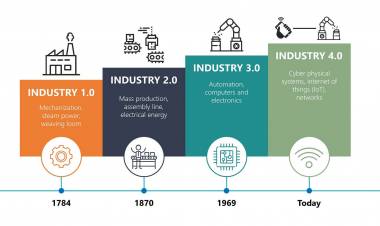The core banking systems of today.

The core banking systems of today.
The prevailing banking systems present several important obstacles in the creation of an innovative company. Through an IT structure that is not limited to being a rigid set of processing elements, but allows the bank to move towards agility, flexibility and speed.
An executive survey conducted in 2014 showed that most banking software is more than 10 years old and some more than 30 years old, and only 10% of banks have changed their IT platforms in the last three years. The cost of maintaining an existing Core Banking, in most banks, amounts to between 70 and 80% of IT budgets. This is higher than the average in other sectors, where the reported figure is generally 60%. It is more than double that for digital companies such as Google, PayPal and Amazon, for which maintenance amounts to 30%. Much of the maintenance is related to lack of flexibility, redundancy, differences in data definitions, lack of documentation of old code, and software "patches."
That doesn't just detract from value; It also diverts resources that would otherwise be invested in financial innovation. It forces companies to incur increasing costs and places them in a situation of inflexibility with respect to the business. Multiply the time to market products and services by a factor of 3-10. It blocks banks in their technological base, which implies blocking them in their processes, strategies and markets. But there is something worse: the core banking system is getting older and more complex. The survey article says that "institutions are increasingly linked to the platforms of their suppliers ... [As] banking solutions become more sophisticated, it is likely to be even more difficult for banks to realize change".
At least there was some improvement with respect to 2010, when another survey of European banks found that 69% of the systems were between 11 and 30 years old and that for 11% they were before the 80s.
The core banking systems that are most used today were built for the administrative tasks of “Back-office”. They are not updated in many aspects: for example the hardware has been discontinued for several decades. A figure that shows the number of banks that are generally lagging in technology is that in 2014 it is estimated that 95% of the world's ATMs use the Windows XP operating system. This system was discontinued by Microsoft in 2005 and, since then, has been replaced by Windows Vista, 7 and 8. It stopped providing technical support to XP in mid-2014. XP's operating costs are approximately five times higher than those of Windows 7. So banks rely on an essential software base with many years of lag with respect to what their customers have on their home computers.
One of the core programming languages of the Core Banking, COBOL, ceased to be a standard decades ago. In a field where the currency of technical expertise is a predominant factor in the construction of an IT talent base, the average age of COBOL language programmers dealing with these legacy systems fisa 50, and more than a quarter of them exceeds 60. COBOL is no longer taught in universities or used in any web-based application.
As with an old truck, you have to put more and more money into its maintenance so that things go. There are many software packages that allow them to expand without having to redesign the core, although these almost always increase the complexity of IT operations, especially maintenance. In a certain phase the systems begin to collapse.
The United Kingdom represents an alert in this regard. It is a concentrated market, with six financial entities representing 94% of all transactions. Each of them has had breakdowns in their systems during the last three years: NatWest, 2012 and 2013: millions of people could not make withdrawals, transfer money or use debit cards for three days; Lloyds TSB, 2014: ATMs across the country dropped for half a day; RBS 2012 and 2013: blocked cards and accounts paralyzed for several days; 2012, Ulster Bank: blocked several weeks; Barclays, 2013: telephone and internet banking out of order, all debit cards unusable; Natwest, Halifax and Bank of Scotland: quite frequent accidents in mobile banking. Statistically, every bank customer in the United Kingdom has been affected by more or less serious falls in the last two years.
The main change in the effective use of IT to compete for the best customer experience is towards an architecture that provides these capabilities. These cannot be satisfied with any core banking system that is ten years old or older. The delay expressed as "cannot" becomes "is totally impossible". Of course, technology never creates a successful business innovation by itself. The classic moral here is the case of GM that spent US $ 54,000 million to acquire IT while its market share continued to plummet. In the end, he could have bought the entire Japanese car industry for only US $ 35,000 million.
But no bank today can position itself to be one of the customers' favorites tomorrow without a top-notch IT architecture. The general directors of UK banks, in addition to their critics, their regulators, customers and competitors point to decades of lack of investment in IT as the main factor in the deterioration of services and increased risks. IT has to be a priority issue on the board of directors' agenda, while there is still some time left to move.



















